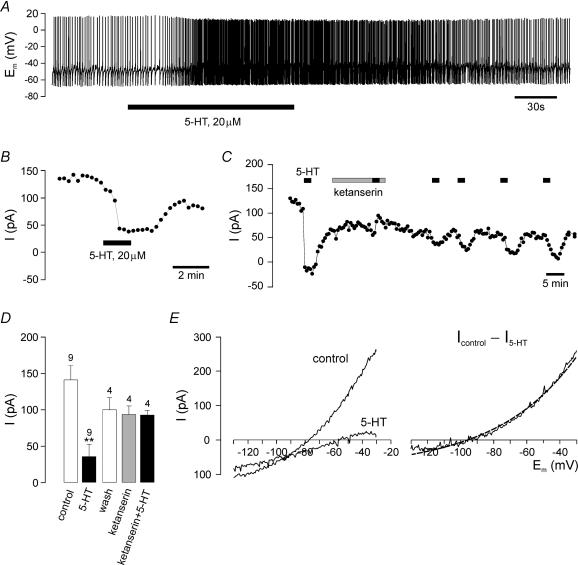Figure 1. Effects of 5-HT.
A, whole-cell current-clamp recording of spontaneous activity of a dorsal vagal neurone (DVN). Bath-application of 5-HT (20 μm) for 2 min (filled bar) causes a reversible, small depolarization and concomitant increase in spontaneous action potential firing. B, in voltage clamp, 5-HT reduces the standing outward current (ISO) at −20 mV command voltage. C, this effect is completely blocked by prior application of the 5-HT2 receptor antagonist ketanserin (1 μm). Note the slow recovery of the 5-HT inhibition of ISO after washout of ketanserin, and the rundown of ISO over the course of the recording. D, mean effects of 5-HT and ketanserin in recordings similar to those shown in B and C; ‘wash’ indicates the current after removal of 5-HT immediately prior to application of ketanserin. The difference between the ‘control’ and ‘wash’ bar, which is not statistically significant, reflects the rundown of ISO prior to ketanserin treatment. Number of cells (n) is given above the bars. **P < 0.01 versus control (unpaired t test). E, representative current–voltage relation (I–V) obtained from a DVN in the presence and absence of 5-HT (20 μm), and I–V for the 5-HT-inhibited current (Icontrol−I5-HT). This current is well described by the Goldman-Hodgkin-Katz (GHK) current equation (dashed line).

